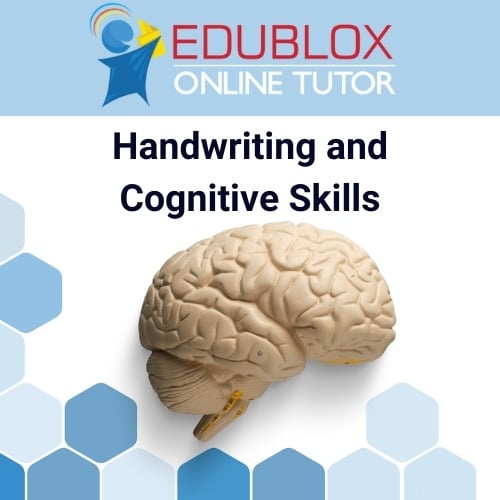
Handwriting difficulties affect between 10 and 30% of children. Research shows that handwriting deficits do not resolve without intervention. Research also shows that improving cognitive skills should be part of every child’s handwriting treatment plan.
Introduction
Proficiency in handwriting is essential if students are to accomplish an acceptable amount of work in the classroom and meet the standards of the teacher and curriculum.
Elementary schoolchildren spend 30 to 60% of their classroom time performing handwriting and other fine motor tasks (McHale & Cermak, 1992). Many of these tasks, including most tests and examination papers, are performed under time constraints.
Despite the widespread use of computers, legible handwriting remains an important life skill that deserves attention from educators and health practitioners.
Handwriting deficiencies
Handwriting can be deficient either in terms of legibility or in terms of speed. Common handwriting problems include incorrect letter formation, poor alignment, reversals, uneven size of letters, irregular spacing between letters and words, and slow motor speed. Difficulty in this area can interfere with academic achievement. Illegible handwriting can create a barrier to accomplishing other higher-order skills, such as spelling and story composition (Feder & Marjnemer, 2007).
Handwriting is a complex skill. It follows that before more systematic ways of teaching children to write can be developed, the constellation of skills necessary for efficient writing will need to be better understood. Competent handwriting depends on the maturation and integration of multiple skills, including cognitive skills. Cognitive skills are the core skills your brain uses to pay attention, think, learn, remember, and reason.
Cognitive skills underlying handwriting
Tseng and Chow (2014) compared 34 children with slow handwriting to 35 with typical handwriting speed in terms of fine motor function, visual perception (including visual discrimination, visual memory, visual-spatial relationships, visual form constancy, visual sequential memory, visual figure-ground, and visual closure), visual-motor integration, and sustained attention.
Visual perception refers to the brain’s ability to understand what one sees. Visual memory, the ability to recall or remember the visual details of what one has seen, is often considered a subset of visual perception rather than a separate skill. Various researchers have stated that as much as eighty percent of all learning occurs through the eye – with visual memory as a crucial aspect of learning.
Sequential memory requires items to be recalled in a specific order. For example, in saying the days of the week, months of the year, a telephone number, the alphabet, and in counting, the order of the elements is of paramount importance. Visual sequential memory is the ability to remember things seen in sequence.
The typical speed handwriting group in Tseng and Chow’s study scored higher than the slow handwriting group on all measures. However, the difference between the groups was insignificant for the visual discrimination and visual closure tests.
Analysis showed that fine motor skill was only an important predictor of handwriting speed for the typical-speed handwriting group and not for the slow handwriting group. After age (the students were 7 to 11 years of age), visual sequential memory was the best predictor for the slow handwriting group.
Importance of visual memory confirmed
A study by Vlacos and Karapetsas (2003) supports the importance of visual memory in handwriting. The researchers concluded that children with dysgraphia suffer cognitive difficulties that influence visual memory much more than visuomotor skills. Dysgraphia is a learning disability that affects writing abilities. It can manifest itself as difficulties with spelling, poor handwriting, and trouble putting thoughts on paper.
In a study by Leung et al. (2014), children with handwriting difficulties showed significantly worse directionality, visual discrimination, visual-spatial relationships, visual form constancy, visual sequential memory, visual figure-ground, visual closure, and visual-motor integration.
These studies suggest that therapy for poor handwriting should be directed toward enhancing visual perceptual skills, especially memory for visual form and sequence.
Improving visual memory

Edublox’s Development Tutor aims to improve visual perception, visual memory, and visual sequential memory, as well as other skills like focused attention, processing speed, and reasoning ability. Development Tutor should be an integral part of any handwriting program.
In a study by Mays (2014), thirty-four 5th, 6th, and 7th-grade students from an inner city school were tested on two sub-tests of the Test of Visual Perceptual Skills before and after 22.5 hours of Edublox training. The results: the mean score of the Edublox group improved from 6.3 to 7.8 years in visual memory and 6.6 to 8.1 years in visual sequential memory.
The bottom line
Handwriting difficulties affect between 10 and 30% of school-aged children, and there is evidence to indicate that handwriting deficits do not resolve without intervention (Feder & Marjnemer, 2007). Improving cognitive skills like visual and visual sequential memory should be part of every child’s handwriting treatment plan.


